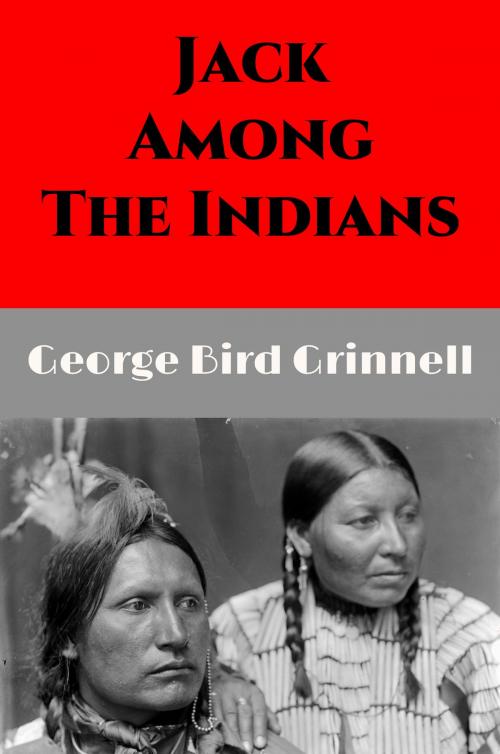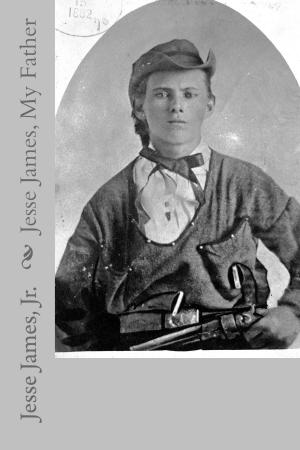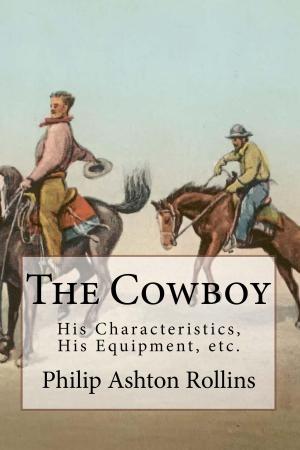Jack Among the Indians (Illustrated)
A Boy's Summer on the Buffalo Plains
Fiction & Literature, Westerns, Action Suspense, Classics| Author: | George Bird Grinnell, Edwin Willard Deming, Illustrator | ISBN: | 1230002686554 |
| Publisher: | Steve Gabany | Publication: | October 15, 2018 |
| Imprint: | Language: | English |
| Author: | George Bird Grinnell, Edwin Willard Deming, Illustrator |
| ISBN: | 1230002686554 |
| Publisher: | Steve Gabany |
| Publication: | October 15, 2018 |
| Imprint: | |
| Language: | English |
In his first "Jack" book, "Jack the Young Ranchman," the subject was similar to this second one: the Western plains and mountains. "Jack the Young Ranchman" was the outcome of the delight which certain young men and women found in the stories told them of the West of earlier days, of the adventures and experiences which might and did befall a boy of that day in the West.
The first "Jack" book proved so successful that the author was asked to continue the series. "Jack Among the Indians," published by Frederick A. Stokes Company, in 1900, is the result, and as a second book in the line, its success must be gratifying to all concerned. The reader is the hardest critic in the world, and young adult books are the hardest of all to write as seen by the constant demand for them. One of the tests of a good young adult book is that grown people like to read it, too. This test may be applied without hesitation to Grinnell's second young adult book.
We learn a great deal of Western geography, Western life, and Western modes of thought and action in this book. The scheme is a plain and pleasing one: Jack, a young Eastern boy, is put in the charge of Hugh Johnson, an old plainsman, and makes a horseback journey from the lower range up across Wyoming and Montana to the camp of the Piegans, above the Missouri River, where he spends a part of one summer living as the Indians live. He kills mountain sheep, deer, antelope and buffalo; saves the life of an Indian girl; kills a bear; and learns to run the buffalo on a bareback horse, and kill buffalo as the Indians did, with the bow and arrow.
Especially fine is the narrative after the old hunter and his young charge really reach the camp of the Piegans, where the hunting stories keep readers turning the pages as fast as may be. And at the close there comes about of intricacy which may be fiction or may be fact, for the two are hard sometimes to separate in their wonderfulness in the old West.
The young hunter and his boy friend of the Indian village, with their older companion Hugh, find a pouch of gold and a golden powder charger on which are scratched the initials "BL." How the finders use this gold whose value runs up to some thousands of dollars, how they at last find the man who lost the gold, the book itself best tells.
The book is well worth the title of good historical fiction for young adults, and it is well known that a man is a young adult well into his 70s.
George Bird Grinnell (September 20, 1849 – April 11, 1938) was an American anthropologist, historian, naturalist, and writer. Grinnell was born in Brooklyn, New York, and graduated from Yale University with a B.A. in 1870 and a Ph.D. in 1880. Originally specializing in zoology, he became a prominent early conservationist and student of Native American life. Grinnell has been recognized for his influence on public opinion and work on legislation to preserve the American bison. Mount Grinnell is named after Grinnell.
In his first "Jack" book, "Jack the Young Ranchman," the subject was similar to this second one: the Western plains and mountains. "Jack the Young Ranchman" was the outcome of the delight which certain young men and women found in the stories told them of the West of earlier days, of the adventures and experiences which might and did befall a boy of that day in the West.
The first "Jack" book proved so successful that the author was asked to continue the series. "Jack Among the Indians," published by Frederick A. Stokes Company, in 1900, is the result, and as a second book in the line, its success must be gratifying to all concerned. The reader is the hardest critic in the world, and young adult books are the hardest of all to write as seen by the constant demand for them. One of the tests of a good young adult book is that grown people like to read it, too. This test may be applied without hesitation to Grinnell's second young adult book.
We learn a great deal of Western geography, Western life, and Western modes of thought and action in this book. The scheme is a plain and pleasing one: Jack, a young Eastern boy, is put in the charge of Hugh Johnson, an old plainsman, and makes a horseback journey from the lower range up across Wyoming and Montana to the camp of the Piegans, above the Missouri River, where he spends a part of one summer living as the Indians live. He kills mountain sheep, deer, antelope and buffalo; saves the life of an Indian girl; kills a bear; and learns to run the buffalo on a bareback horse, and kill buffalo as the Indians did, with the bow and arrow.
Especially fine is the narrative after the old hunter and his young charge really reach the camp of the Piegans, where the hunting stories keep readers turning the pages as fast as may be. And at the close there comes about of intricacy which may be fiction or may be fact, for the two are hard sometimes to separate in their wonderfulness in the old West.
The young hunter and his boy friend of the Indian village, with their older companion Hugh, find a pouch of gold and a golden powder charger on which are scratched the initials "BL." How the finders use this gold whose value runs up to some thousands of dollars, how they at last find the man who lost the gold, the book itself best tells.
The book is well worth the title of good historical fiction for young adults, and it is well known that a man is a young adult well into his 70s.
George Bird Grinnell (September 20, 1849 – April 11, 1938) was an American anthropologist, historian, naturalist, and writer. Grinnell was born in Brooklyn, New York, and graduated from Yale University with a B.A. in 1870 and a Ph.D. in 1880. Originally specializing in zoology, he became a prominent early conservationist and student of Native American life. Grinnell has been recognized for his influence on public opinion and work on legislation to preserve the American bison. Mount Grinnell is named after Grinnell.















